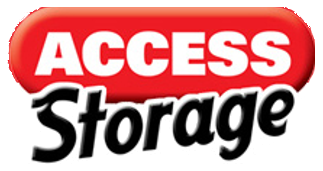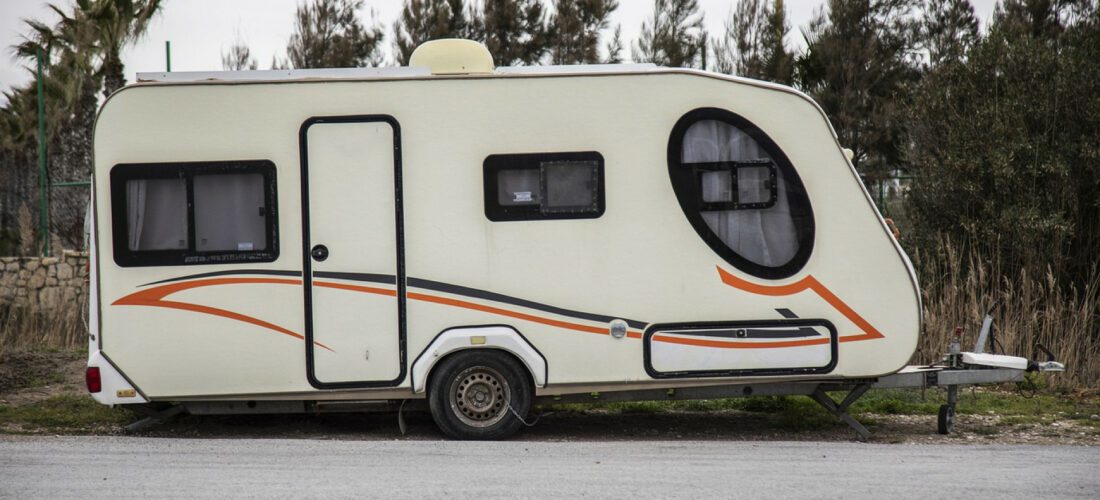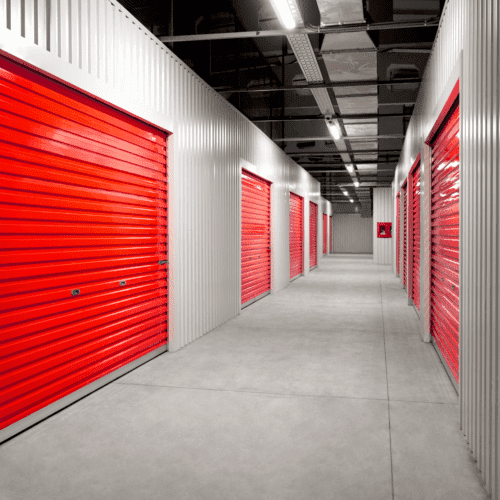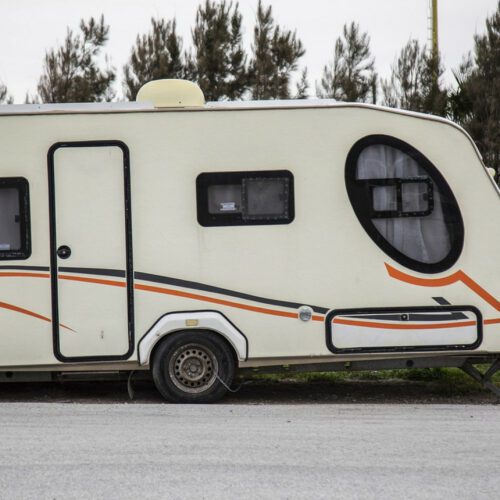You’re planning your next caravan trip. You’ve seen references to ATM which stands for Aggregate Trailer Mass. It’s the total permissible weight your caravan can handle including everything inside. Understanding ATM is vital if you want to prevent accidents or costly damage. It helps you know your caravan’s limits right from the start.
If you’re after the the most affordable caravan storage Adelaide has to offer, speak to our friendly team at Access Self Storage.
Knowing this figure keeps you in control. You avoid overloading your setup so your towing experience stays safe and legal. By keeping ATM in mind you plan more confidently and ensure proper weight distribution. It’s a small detail yet it makes a huge difference in your peace of mind on every trip.
The Definition Of ATM Weight
ATM refers to Aggregate Trailer Mass. It’s the maximum permissible mass in kilograms of your caravan when it’s not coupled to a towing vehicle. It includes your caravan’s chassis, body, internal fittings, accessories, and payload items (e.g. food supplies). This figure is determined by relevant automotive authorities, such as the Australian Design Rules (ADR). You can find the ATM figure on your caravan’s compliance plate.
Factors Influencing Caravan ATM Weight
You might see fluctuations in caravan ATM weight, as each component and feature contributes to the final figure. It’s useful to examine structural factors when checking overall load.
Chassis Strength And Materials
Chassis design impacts caravan ATM weight. Heavier metals can raise your total mass if they push compliance limits. Thicker steel frames add durability. Lighter alloys like aluminium cut excess kilograms.
| Material | Approx. Weight Per Metre² (kg) |
|---|---|
| Steel | 25–30 |
| Aluminium | 7–12 |
Accessories And Add-Ons
Extra features affect ATM weight on your caravan. Solar panels, toolboxes and additional water tanks raise load capacity. Pre-installed air conditioning units or entertainment systems also increase overall mass. It’s helpful to check each item’s contribution on the compliance plate for precise figures.
Calculating Your Caravan’s ATM
Measuring ATM determines safe loading limits. Accurate figures maintain regulatory compliance and reduce stress on each journey.
Step-By-Step Weighing Process
- Load your caravan with regular items if you want a realistic total mass.
- Drive onto a calibrated weighbridge and record the reading.
- Compare that figure with your compliance plate rating if the numbers differ significantly.
- Add or remove accessories if you observe overload risks.
- Keep track of each item’s weight contribution using ADR guidelines.
- Re-check the weighbridge reading if you modify your load configuration.
Common Pitfalls When Assessing ATM
Common pitfalls when assessing ATM often involve inaccurate figures or overlooked items.
- Overestimating Tare Weight can distort your final figures if you rely on unverified data.
- Forgetting water storage adds unexpected kilograms if tanks are filled before departure.
- Ignoring accessories, such as solar panels or air conditioners, leads to heavier loads than anticipated.
- Mixing payload mass with chassis limits reduces compliance if items exceed the authorised rating.
- Relying on a single weighbridge reading risks incorrect ATM calculations if equipment isn’t calibrated properly.
Tips For Managing Caravan Weight
Maintain a balanced load across axles if stable towing is the goal. Distributing heavier items, such as toolboxes weighing 15–20kg, near the centre of the caravan supports smoother handling.
Monitor weighbridge calibration before each trip if reliable ATM tracking is desired. Using a certified device prevents inaccuracies that might cause overloaded conditions.
Account for accessory weights, including solar panels or battery chargers, if chasing compliance with ADR guidelines. An extra 30kg from a standard battery charger can push the ATM over the limit if it’s not recorded in your calculations.
Verify water tank levels regularly if avoiding sudden weight spikes is vital. A 100L tank adds 100kg to the total, which can affect axles and chassis ratings.
Track modifications by updating a checklist whenever items or fittings change if consistent ATM figures are needed. This approach helps maintain a clear view of loading configurations and payload allowances.
Conclusion
You’re better equipped for every journey when you know your caravan’s ATM and keep a watchful eye on any changes. It only takes a little extra care to manage weight effectively.
By staying mindful of your caravan’s components and making small adjustments as needed you help ensure smoother travels. Consistently verifying load limits, checking equipment updates, and factoring in heavier items reduces stress and the risk of compliance issues.
A well-balanced caravan that respects its ATM rating delivers a safer and more comfortable towing experience, giving you added peace of mind wherever the road leads.
Frequently Asked Questions
What is Aggregate Trailer Mass (ATM)?
ATM is the total permissible weight of your caravan when fully loaded. It covers the chassis, body, fittings, accessories, plus all payload items, including food and supplies. This figure is set by relevant authorities, such as the Australian Design Rules (ADR), and is found on the caravan’s compliance plate. Staying within the ATM ensures safer towing, protects against damage, and keeps your setup legal on the road.
Why is knowing my caravan’s ATM important?
Understanding your caravan’s ATM helps you avoid overloading and potential accidents. It ensures your vehicle and caravan remain stable during travel, preventing excessive strain on brakes, suspension, and tyres. Complying with the maximum weight rating also safeguards you legally, reducing the risk of fines or insurance complications. In short, knowing your ATM fosters a safer, smoother, and more enjoyable journey.
How can I find my caravan’s ATM?
Look for the compliance plate on your caravan, which lists essential weight ratings, including the ATM. This plate is usually located near the caravan’s door or on the drawbar. It is set by regulatory authorities like ADR. If you’re unsure, consult your dealer or manufacturer. Once located, record the figure for accurate references when weighing and loading your caravan.
How do I calculate my caravan’s ATM?
First, load your caravan with regular items, then take it to a calibrated weighbridge for a reading. Compare this figure with the compliance plate’s ATM rating. If there’s a big difference, reduce or rearrange items until the mass matches or falls below the stated limit. Re-check on the weighbridge after adjustments to confirm compliance and ensure safe handling.
What common mistakes affect ATM accuracy?
Overestimating tare weight, forgetting to factor in water storage, and ignoring accessory installations can all distort ATM calculations. Relying on inaccurate weighbridge readings or mixing payload limits with chassis capacity also lead to errors. To avoid issues, verify each item’s weight, confirm weighbridge calibration, and keep track of accessories like solar panels or air conditioners.
How can I manage caravan weight effectively?
Distribute heavier items toward the centre of the caravan for balance. Regularly weigh your setup at a calibrated weighbridge to confirm you remain under the maximum limit. Check each item’s weight contribution, including batteries, toolboxes, and water levels. Keeping an updated list of modifications helps you monitor changes over time, ensuring your ATM stays within authorised limits.
What are the risks of exceeding the ATM?
Excess weight can overwhelm the caravan’s structure, strain the towing vehicle, and compromise braking and stability. This increases the risk of accidents, damage, and possible fines or insurance problems. Ultimately, exceeding the ATM endangers you and other road users. Staying within legal weights aligns with safe towing practices and protects your holiday investment and peace of mind.
When should I re-check my caravan’s ATM?
It’s wise to re-check whenever you add, remove, or change accessories, or whenever you suspect weight fluctuations. Regular checks, particularly before long trips or after significant modifications, help ensure you maintain compliance and keep your towing setup safe. Staying vigilant about your caravan’s weight avoids surprises and promotes smoother, safer journeys.
Looking for more information about caravan storage? Checkout our related guide on Should You Store Your Caravan with Legs Down?



